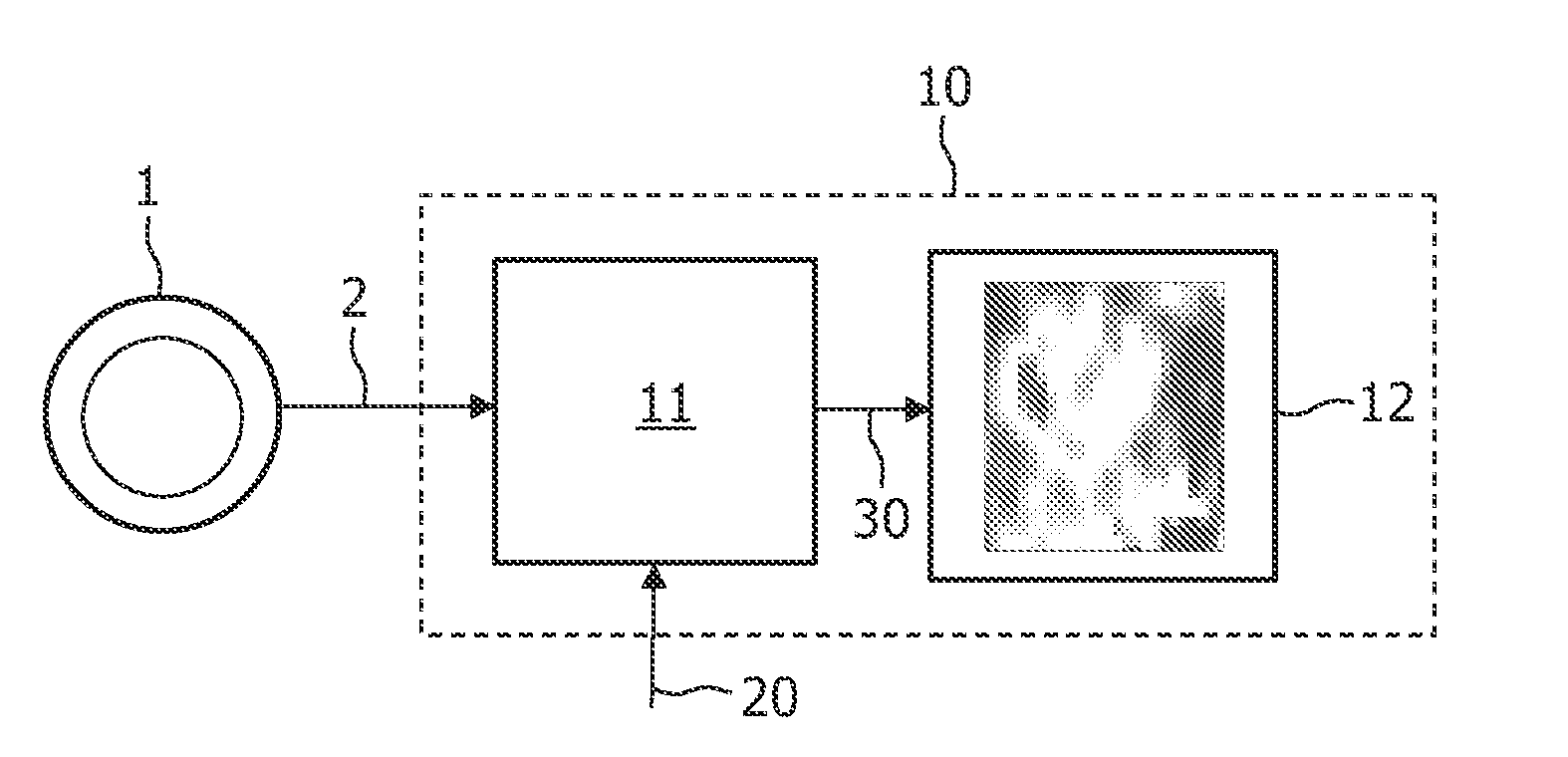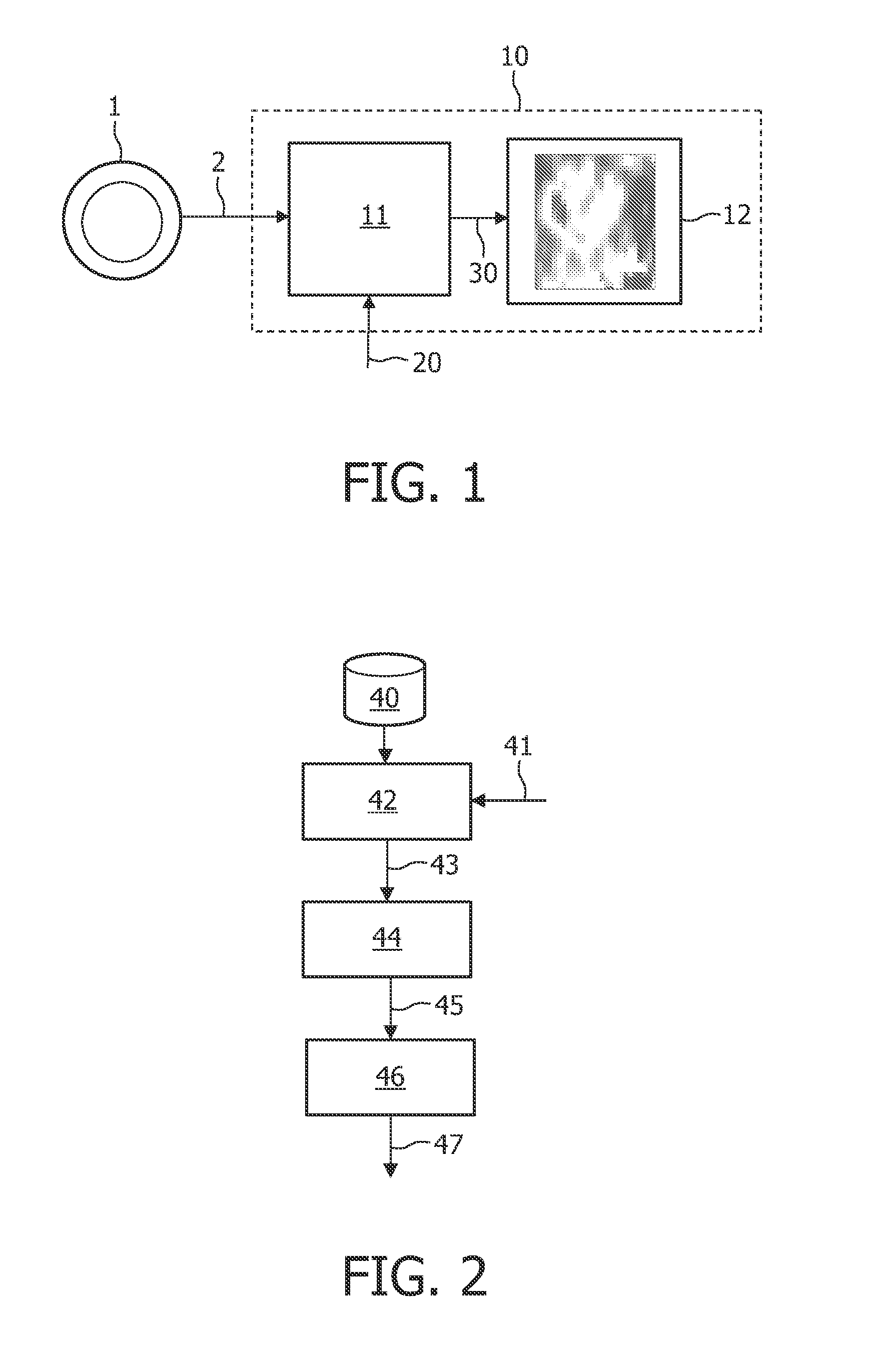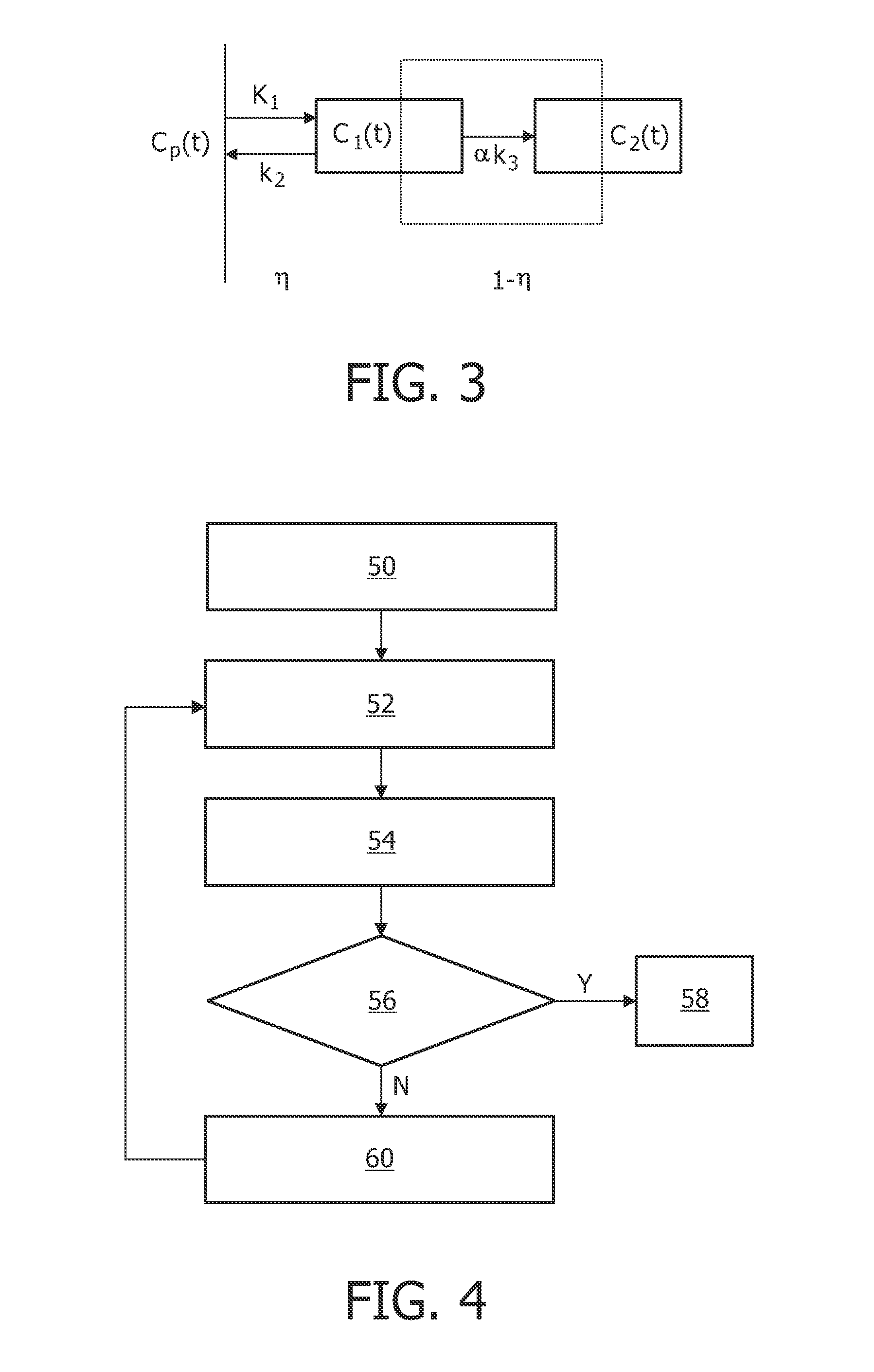Image generation based on limited data set
a technology of limited data set and image generation, applied in image analysis, image enhancement, instruments, etc., can solve the problems of insufficient use and prolonged acquisition time, and achieve the effect of increasing patient comfor
- Summary
- Abstract
- Description
- Claims
- Application Information
AI Technical Summary
Benefits of technology
Problems solved by technology
Method used
Image
Examples
Embodiment Construction
[0042]FIG. 1 illustrates a device 10 arranged for operation in connection with a scanner 1, e.g. a PET scanner, which can record a sequence of images 2 as a function of time, or data representing such images 2. The sequence of images 2 represents a scanning of a regional part of a human body after injection of a radio tracer or contrast agent. The sequence of images 2 may represent, for example, FMISO data with missing time points. It may be that images in a particular time range (e.g. 0-90 minutes) after injection are missing. The incomplete sequence of images 2 is then processed by a signal processor 11, either directly from the scanner 1 or after being stored. The signal processor 11 also receives additional data 20, such as literature-based data regarding a kinetic parameter range, and optionally an input function, such as blood clearance functional data. The signal processor 11 then performs an iterative algorithm on the data 2, 20 comprising the application of a pharmacokineti...
PUM
 Login to View More
Login to View More Abstract
Description
Claims
Application Information
 Login to View More
Login to View More - R&D
- Intellectual Property
- Life Sciences
- Materials
- Tech Scout
- Unparalleled Data Quality
- Higher Quality Content
- 60% Fewer Hallucinations
Browse by: Latest US Patents, China's latest patents, Technical Efficacy Thesaurus, Application Domain, Technology Topic, Popular Technical Reports.
© 2025 PatSnap. All rights reserved.Legal|Privacy policy|Modern Slavery Act Transparency Statement|Sitemap|About US| Contact US: help@patsnap.com



